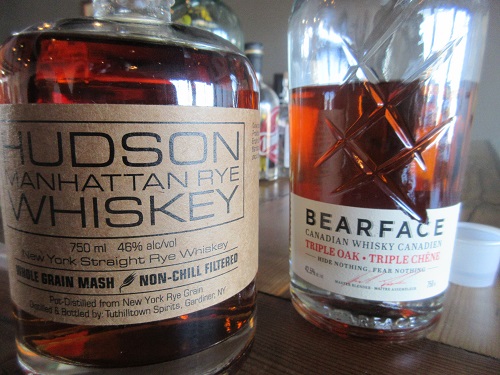In my most recent Workshop, I offered up samples of two Whiskies to hammer home a critical point. The point I was making was that a ferment generates an entire spectrum of alcohol type molecules with 2,3,4,5,6 and more Carbon atoms in their structures. By far, the most predominant molecule produced in a ferment is ethanol (C2H5OH). During distillation, the more vaporization and condensation that occurs, the more these various molecules will be separated from each other. Still internal surface area is directly related to the propensity for vaporization and condensation ( a.k.a “reflux”). In a column still with plenty of internal surface area, the distillate emerging from the still will be heavily comprised of ethanol. The other spectrum members will not emerge from the still. In a pot still with lesser internal surface area the distillate coming off the still will be comprised of ethanol and several other higher molecular weight constituents. The pot still distillate will thus have more texture, body and mouthfeel than the column distillate. In your travels, if you can find some Hudson Manhattan Rye Whisky, it will be a shining example of what a 4 year old pot distilled product tastes like. Conversely, if you can find something like a Bearface Canadian Whisky, it exemplifies what a column product tastes like. I am not at all suggesting that column Whisky is bad. There is a consumer segment for all types of Whisky. As a craft distiller, one must decide which segment of the Whisky drinking market to pursue. This, then will drive the equipment selection process.




